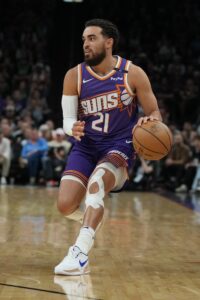The NBA’s salary cap primarily serves as a way to restrict the amount a team can invest in player salaries in a given year. However, because the league has a soft cap rather than a hard cap, there’s technically no specific figure that clubs are prohibited from exceeding once they go over the cap to re-sign players. As long as a team doesn’t use certain exceptions or acquire a player via sign-and-trade, that team doesn’t face a hard cap.
There is, however, a specific threshold on the lower end that teams must meet in each NBA season. The league’s minimum salary floor requires a club to spend at least 90% of the salary cap on player salaries. For instance, with the 2025/26 cap set at $154,647,000, the salary floor for this season is $139,182,000.
For the purposes of calculating whether a team has reached the minimum salary threshold, cap holds and international buyouts aren’t considered, but players who suffered career-ending injuries or illnesses are included in the count, even if they’ve since been removed from the club’s cap.
Under the NBA’s previous Collective Bargaining Agreement, the penalties levied against a team whose salary was below the minimum floor at the end of the season weren’t very harsh — the franchise was simply required to make up the shortfall by paying the difference to its players.
However, the current Collective Bargaining Agreement has made those penalties for teams below the minimum salary floor significantly more punitive.
A team is now required to reach the minimum salary floor by the start of the regular season, rather than the end of the regular season. A team whose salary is below the minimum floor at the start of the regular season won’t receive a share of the end-of-season luxury tax payouts.
Additionally, a team whose salary is below the minimum floor at the start of the season will have a cap hold added to its salary in order to reach the minimum floor. For instance, a team with a $134,182,000 salary on opening night in 2025/26 would have a $5MM cap hold added to its salary to reach the $139,182,000 floor and would be unable to immediately access that $5MM of cap room (that “frozen” room could eventually be unfrozen if the team increases its salary above the minimum floor).
At the start of the regular season, a team is assigned an “MTS threshold” figure, which is the lesser of the minimum salary floor or the team’s salary as of opening night. A team that dips below its “MTS threshold” at any time during the regular season would have until the end of the next day to get back above that threshold.
This happened to the Pistons during the 2024/25 season — they briefly dropped below the minimum salary floor when they waived Paul Reed‘s partially guaranteed $8MM contract in December and were required to get back above the floor by the end of the next day. They did so by signing Javante McCoy to a contract worth well above his minimum a little over 24 hours later.
A team that begins the season below the floor cannot reduce the shortfall amount it pays the NBA by spending on player salaries during the season. For example, a team that starts the season $5MM below the floor would pay the league $5MM at that time and wouldn’t recoup that money even if it moves above the floor during the season.
However, if that team’s salary ends up more than $5MM below the floor by the end of the season (ie. as a result of likely incentives not being earned), the club would owe the league an additional payment on top of that initial $5MM.
While the previous CBA called for a team that finished the season below the floor to pay the shortfall to its own players, the shortfall money is now sent to the NBA, which then redirects it to all players. That shortfall money will generally be disbursed to each player in the league in proportion to his salary for that season.
Based on the changes in the current CBA, it’s unlikely that we’ll see any team open a regular season below the minimum salary floor anytime soon — all of the incentives that teams had to remain below the floor into the season have been eliminated. A team operating below the floor on opening night wouldn’t be able to access all of its cap room, would forfeit an end-of-season tax payment, and wouldn’t even be able to award its shortfall amount exclusively to its own players.
The Nets are currently the only NBA team operating below the minimum salary floor for 2025/26 — it’s a safe bet they’ll rectify that sometime before the start of the season this October.
Note: This is a Hoops Rumors Glossary entry. Our glossary posts will explain specific rules relating to trades, free agency, or other aspects of the NBA’s Collective Bargaining Agreement. Information from ESPN’s Bobby Marks and Larry Coon’s Salary Cap FAQ was used in the creation of this post.
Earlier versions of this post were published in past years.
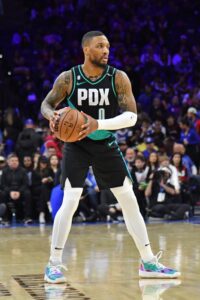 For the second consecutive season, multiple players will have no-trade clauses in their contracts during the 2025/26 league year. In addition to
For the second consecutive season, multiple players will have no-trade clauses in their contracts during the 2025/26 league year. In addition to 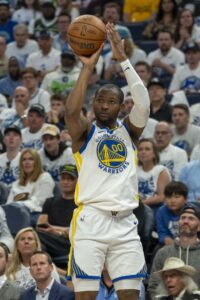 Let’s say the Warriors want to sign-and-trade
Let’s say the Warriors want to sign-and-trade 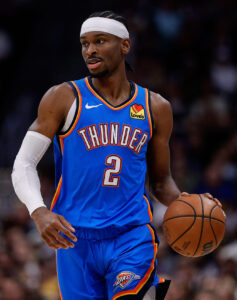 Extensions, of course, don’t involve adding a new player to the roster. By extending a contract, a team ensures that a current player will remain locked up for multiple years to come. Although a contract extension may not change the club’s short-term outlook on the court, it can have a major impact on that team’s salary cap situation for the next several seasons.
Extensions, of course, don’t involve adding a new player to the roster. By extending a contract, a team ensures that a current player will remain locked up for multiple years to come. Although a contract extension may not change the club’s short-term outlook on the court, it can have a major impact on that team’s salary cap situation for the next several seasons.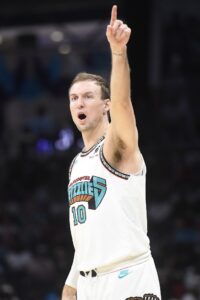 Atlanta Hawks
Atlanta Hawks